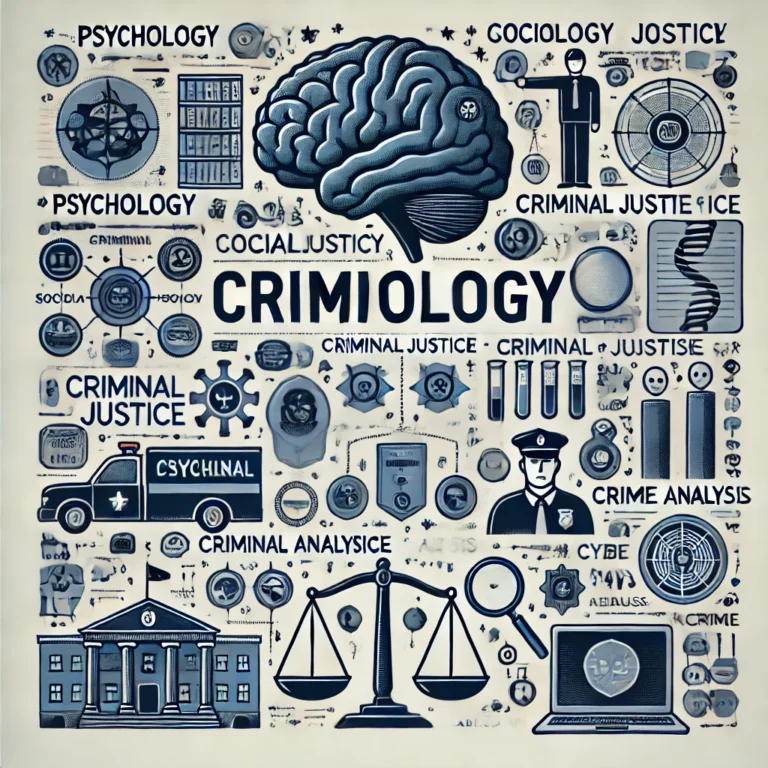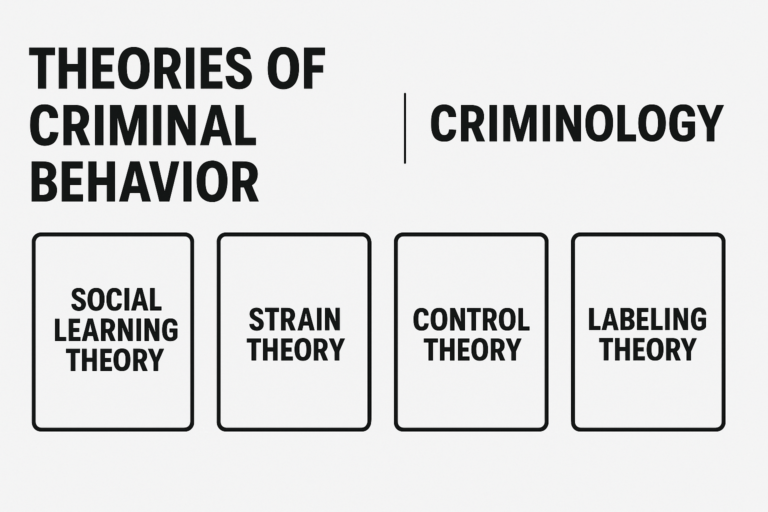Cesare Lombroso: The Father of Modern Criminology
Cesare Lombroso, often hailed as the “Father of Modern Criminology,” revolutionized the study of crime by introducing a scientific approach to understanding criminal behavior. Prior to Lombroso, criminology was largely influenced by moralistic and philosophical perspectives, with little emphasis on empirical evidence. Lombroso’s groundbreaking theories, particularly his concept of the “born criminal,” laid the foundation for criminology as a distinct scientific discipline. While his ideas have faced significant criticism and have evolved over time, his contributions remain a cornerstone in the history of criminology.
Early Life and Education
Cesare Lombroso was born on November 6, 1835, in Verona, Italy, into a Jewish family. His early education was marked by an intense curiosity about human behavior and the natural sciences. Lombroso pursued medicine at the University of Pavia and later at the University of Vienna, where he specialized in psychiatry and forensic medicine. His academic journey exposed him to diverse fields, including anthropology, biology, and pathology, which profoundly influenced his later work in criminology.
Lombroso’s medical background provided him with the tools to study the human body in detail, particularly the brain. Early in his career, he worked as a physician in asylums and prisons, where he encountered individuals exhibiting deviant behaviors. These experiences sparked his interest in understanding the biological and psychological underpinnings of criminality.

Lombroso’s Theory of the Criminal Man
Lombroso’s most famous contribution to criminology is his theory of the “born criminal.” In his seminal work, L’uomo delinquente (“The Criminal Man“), first published in 1876, Lombroso argued that certain individuals are biologically predisposed to criminal behavior. He believed that these individuals could be identified through specific physical characteristics, which he termed “atavistic stigmata.”
According to Lombroso, these stigmata included features such as a sloping forehead, large jaw, asymmetrical face, long arms, and other traits reminiscent of earlier stages of human evolution. He theorized that criminals represented a regression to a more primitive, less evolved state of humanity. Lombroso’s work was heavily influenced by Charles Darwin’s theory of evolution, as he saw criminals as evolutionary throwbacks.
Lombroso conducted autopsies on criminals and collected data on their physical and psychological traits. His observations led him to classify criminals into different categories, including:
- Born Criminals: Individuals with innate tendencies toward criminal behavior.
- Occasional Criminals: Those who commit crimes due to environmental or situational factors.
- Criminals by Passion: Individuals driven by strong emotions, such as love or jealousy, to commit crimes.
Contributions to Criminology
Lombroso’s work marked a paradigm shift in the study of crime, as he emphasized the importance of empirical research and scientific methods. Some of his key contributions include:
- Introduction of Positivism: Lombroso was a pioneer of the positivist school of criminology, which focused on observable and measurable phenomena rather than abstract moral reasoning. This approach sought to identify the causes of crime through data collection and analysis.
- Biological Determinism: By linking criminal behavior to biological factors, Lombroso opened new avenues for exploring the relationship between physiology and behavior. His work encouraged further studies in genetics, neuroscience, and psychology.
- Multidisciplinary Approach: Lombroso’s work bridged multiple disciplines, including anthropology, psychiatry, and sociology. This interdisciplinary approach laid the groundwork for modern criminology as an integrative field.
- Focus on Rehabilitation: While Lombroso’s theories emphasized biological predispositions, he also advocated for humane treatment and rehabilitation of criminals. He believed that understanding the causes of criminality could lead to more effective interventions.

Criticism of Lombroso’s Ideas
Despite his contributions, Lombroso’s theories have been widely criticized for their deterministic and reductionist nature. Key criticisms include:
- Lack of Scientific Rigor: Lombroso’s methods often lacked proper controls and statistical analysis. His conclusions were based on small, non-representative samples, making them unreliable by modern standards.
- Biological Reductionism: Critics argue that Lombroso’s focus on physical traits oversimplified the complex interplay of biological, social, and environmental factors that contribute to criminal behavior.
- Ethical Concerns: Lombroso’s theories have been linked to discriminatory practices, as they were used to justify racial and class-based profiling. His emphasis on “atavistic stigmata” was later co-opted by pseudoscientific movements, including eugenics.
- Modern Developments: Advances in criminology and psychology have debunked many of Lombroso’s claims, particularly the notion of physical traits as reliable indicators of criminality. Modern research emphasizes the multifactorial nature of criminal behavior, incorporating genetics, environment, and social influences.
Modern Relevance
While many of Lombroso’s ideas have been discredited, his impact on criminology remains undeniable. He was among the first to treat criminal behavior as a subject of scientific inquiry, challenging the moralistic and punitive approaches of his time. His emphasis on empirical research inspired subsequent generations of criminologists to explore the causes of crime through systematic study.
Today, criminology recognizes the complexity of criminal behavior, integrating biological, psychological, and sociological perspectives. Concepts such as neurocriminology and behavioral genetics, which examine the interplay of brain function and genetics in criminal behavior, can trace their roots to Lombroso’s pioneering work. Additionally, his multidisciplinary approach continues to influence contemporary research methods.
Conclusion
Cesare Lombroso’s legacy as the “Father of Modern Criminology” is a testament to his groundbreaking efforts to understand crime through a scientific lens. Although many of his theories have been refuted, his work laid the foundation for criminology as a distinct academic discipline. Lombroso’s emphasis on empirical research and his attempt to bridge various fields of study have left an indelible mark on the field. By challenging traditional notions of criminality, Lombroso paved the way for more nuanced and evidence-based approaches to understanding and addressing crime. His contributions, though controversial, remain a pivotal chapter in the history of criminology.







